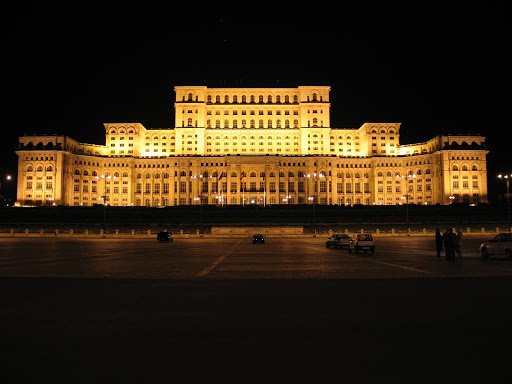The Palace of Parliament in Bucharest, previously known as the House of the Republic or the People’s House, is an immense building with a neoclassical architectural style and influences of socialist realism. Situated in the city center of Bucharest, on Arsenal Hill, this impressive edifice was begun on June 25, 1984, and completed in 1997.
With a total area of 330,000 square meters, the Palace of Parliament ranks among the largest administrative buildings in the world, being described as a replica of the city of Pyongyang in North Korea. It has 12 above-ground floors and another 12 underground, measuring 270 meters in length, 240 meters in width, and 86 meters in height, with a depth of 92 meters below ground level.
The project was initiated by Nicolae Ceaușescu during the communist regime, following the earthquake of 1977, and involved the demolition of vast areas in central Bucharest and the relocation of over 40,000 people. The construction was carried out with the forced labor of conscripted soldiers, at a rapid pace over 7 years, with an estimated 20,000 workers and 5,000 soldiers involved. The initial costs were estimated at $1.75 billion USD, reaching €3 billion by 2006.
The resources used for construction include 1,000,000 cubic meters of marble, 5,500 tons of cement, 7,000 tons of steel, 2,000,000 tons of sand, 1,000 tons of basalt, 900,000 cubic meters of wood, 3,500 tons of crystal, 200,000 cubic meters of glass, 2,800 chandeliers, 220,000 square meters of carpets, and 3,500 square meters of leather.
Although considered one of the most costly and controversial constructions in the world, with over 70% of its space unused, the Palace of Parliament remains a symbol of the communist era and Ceaușescu’s megalomania.

